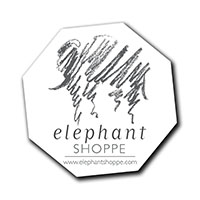Welcome >> This Is Langkawi Nature Park >> ZOOLOGICAL PARK

THE NATURAL FAUNA & ZOOLOGICAL COLLECTION
at Langkawi Nature Park
Zoological Features at Nature Park
The Park was originally developed with zoological features covering more than 8-10 acres at the Park. As these features took up the lion's share of the RM18 million development budget, the zoological section will remain an integral component of Langkawi Nature Park for the foreseeable future.
It would be a waste of resources to demolish these structures and remodelling them would be equally wasteful, if not more. Essentially, we will have make best of the hand that we have been dealt.
Firstly, of the nine originally-planned animal sections, the current iteration of the Park will move forward with only SIX: the Aviary, Hyena Hideout, Predator Castle, Deerland, Great Bear Encounters and a Petting Corner.
By redesignating the other sections, eventually, will allow Langkawi Nature Park to offer more varied activities.
Wildlife Collection
Nevertheless, Langkawi Nature Park's zoological features are relatively" significant" as they have been designed to accommodate large mammals such as carnivores and greater bear species.
Having originally opened in 2018 but closed during lockdown, all of the wildlife previously at Langkawi Nature Park have been relocated or rehomed. However, continued lockdowns have resulted in the decision to re-book Langkawi Nature Park to rehome--temporarily or otherwise--wildlife collections from other zoos.
As such, since April 2022, we have been transferring a number of wildlife back to Langawi
- In April 2022, farm and common wildlife species were brought back to Langkawi. These included the Saanen Goat, Javan Deer and the Spotted Hyena;
- In July 2022, protected species--for which wildlife licenses are required to rear--arrived. These include vulnerable or protected spceies such as parrots, parakeets, primates, lions and other less endangered cats; ndR2
- In September 2022, species requiring special permits to keep in Malaysia arrived. These include jaguars.
While we would generally prefer to feature more Malaysian--and Langkawi--species, again, we will have to deal with the hand that has been dealt. As a consequence, our collection of animals feature more foreign species than Malaysian. Over time, however, as the older specimens pass on or are rehomed, Langkawi Nature Park would feature more local species for conservation and awareness purposes.
The Park would also have to find a balance between the preferences of local and inbound tourists.
As of January 2024, guests will only have access to viewing hyenas, the aviary and deerland.
Natural Fauna
As far as "featuring" local species is concerned, Langakwi Nature Park's lcation within a mangrove forest reserve has also made it "natural home" to a number of local--especially--bird species, including the white-bellied eagle, brahminy kite, lapwings and Oriental-pied hornbills which are often spotted flying overhead or feeding on cherry trees.
During lockdown, a number of lapwings have rehomed themselves within our greenery and these nesting areas have been retained, even if they make the Park appear less manicured than we would like it to be.
In the butterfly months of April and May, more than a dozen different varieties can be spotted at the Park, probably more.
Ocassionally, one may spot leaf monkeys passing through or macaques hoping to snatch food from unsuspecting visitors. Squirrels are often spotted here too.
In the mangrove areas, of course, one will encounter naturally-occuring sea creaturesvisiting our facilities including stone crabs and other mangrove creatures.
More to Come...
>>> Next Page: WHAT MAKES US A RECREATIONAL PARK
Revised January 5, 2024
>>> Top of Page




